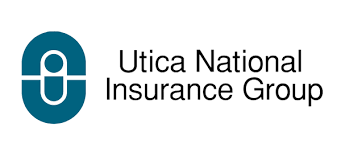Risk Transfer to Subcontractors Can Save You Money
December 30, 2014
Are you about to hire a contractor to get some work done on your building? Maybe it’s a new roof, some plumbing repairs, or a new addition.
If you are, Matt Briggs in our Commercial Lines Accounts department suggests calling him first. The thing he’s worried about is, what happens if the independent contractor you hire causes damage to a third party and you’re sued?
The first thing you should do, whether it’s your home or business, is be sure your contractor has his/her own Commercial Liability Insurance. But the good thing is, Matt can help you create additional protection from negligent acts of the contractor. It’s all done with ‘risk transfer’ rather than insurance. And best of all, it’s free!
Matt has everything you need at the office. Here’s how it works…
Hold Harmless Agreements
Here is an excerpt from a hold harmless agreement we can create for you. We did not include the complete agreement, but enough to give you the idea:
“To the fullest extent permitted by law, _______________________(Subcontractor), agrees at its own cost to defend, indemnify and hold harmless (Contractor), its officers, directors, shareholders … from and against any and all claims, suits, liens, judgments, damages, losses, and expenses including reasonable attorney’s fees and legal expenses and costs arising in whole or in part and in any manner from the acts, omissions, breach or default of Subcontractors…”
As you can see, this adds a layer of protection for you, whether you are a business owner or homeowner hiring subcontractors to work for you. Note also that you are the “Contractor” named above after the Subcontractor that you hire.
Get the full form complete with a section for signatures from Matt at our agency.
Additional Insured
The second part of the Hold Harmless Agreement discussed above is the Insurance section. Here the subcontractor agrees to obtain and keep in force insurance policies to cover its liability in the amounts stated.
This section also has a clause where the Subcontractor agrees to name the Contractor (you) as additional insured on their policy. This holds for both Liability Insurance and Workers Compensation Insurance. And the Subcontractor agrees to furnish certificates of insurance proving coverage is in force.
Waiver of Subrogation
Subrogation happens after a claim when your insurance company “steps in your shoes” and seeks reimbursement from an at-fault third party insurance company for a claim your company paid to you. The incident causing the claim is not your fault and under the subrogation clause of the policy, your insurance company has the right to be reimbursed by the at-fault party after it fulfills its obligation to you.
We recommend for our clients who hire work done either as a building owner or general contractor to have subcontractors sign a Waiver of Subrogation. This protects you, our client, from the subcontractor’s insurance company going after your insurance company in the event of the subcontractor causing a loss.
This keeps your commercial insurance policies clean of losses. It helps prevent rate increases or adverse underwriting decisions based on a subrogated claim by a subcontractor’s insurance company.
So, if you own a building or are a contractor, call us first and we’ll see where we can transfer some of the risk from you to your subcontractor. And we’ll be happy to do it for you without charge.
Until next time,
Your SZW Team
Scalzo, Zogby & Wittig, Inc. is your New Hartford area independent insurance agent. Call us for a quote on insurance for your home, car, business, or life at 315.792.0000.




